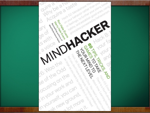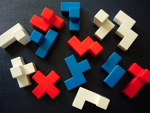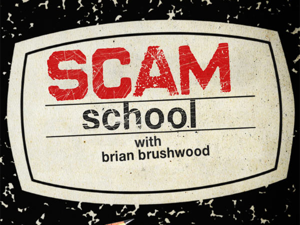 Michael Daniels, the webmaster behind the Mind Magician site, has just released a new PDF eBook called Speed Dating.
Michael Daniels, the webmaster behind the Mind Magician site, has just released a new PDF eBook called Speed Dating.
This eBook is his approach to one of my favorite feats, being able to name the day of the week for any given calendar date. Naturally, I couldn't resist taking a closer look.
Here are my thoughts on the bullet points from the Lybrary.com ad for Speed Dating.
* Easy calculations – The math used in this eBook is the classic approach to the day for any date feat. Most of it is simple addition. There has always been one sticking point that catches many people, but the author offers an ingenious solution to that, which I'll come back to later.
* Uses an innovative mnemonic method which is fully described – Again, if you're already familiar with the Peg/Major system (as discussed in Memory Basics), that is fully described. What is innovative here is the way the mnemonics are coded so as to bring the required key numbers to mind as quickly as possible. I do like that memorization of the year keys is emphasized here, as that's really the only way to go when speed is important.
* Simple counting technique that makes determination of the day fast and effortless – While I mentioned the one sticking point in the classic calculations, the ingenious counting method taught in Speed Dating overcomes that obstacle, and in a way that is simple to learn and use. The best part is that it overcomes the obstacle automatically. I really wish I could be more specific here, but I can't do so without giving away too much from the eBook.
* No props or gimmicks needed – This, of course, has always been one of the best things about the day of the week for any date feat, that you can do it without resorting to special props or gimmicks. Obviously, you should have some sort of perpetual calendar with you, but with the advent of mobile devices, you can usually find perpetual calendar apps without too much trouble.
* Intermediate level mentalism – Requires about two weeks’ learning and practice in order to perfect. A suggested learning schedule is included – Please pay attention to this point. If you're just beginning to learn magic, this probably isn't the best routine to learn. Once you've become more comfortable in front of an audience, and have a better idea of what to expect, this routine can be a good one. Additionally, you'll have a better idea of how to adjust for your performances and your audiences.
* Includes a browser application that enables you to practice and test your accuracy and speed (Internet connection not required) – The included HTML program is basically the same one found under step 4 of the author's online day for any date tutorial (there are a number of differences between that page and the eBook, BTW), but given its own page. The fact that it keeps your calculation time for the last question and an average is very helpful in improving your overall time.
Probably the best thing about Michael Daniels' Speed Dating eBook is the completeness. If you've thought about learning this feat, you can learn everything you need to know from this book. The counting method, the suggested learning schedule, the performance tips, and the included program are all valuable tools because of the way they aid in the learning and encouragement.
Speed Dating is available as a PDF eBook from Lybrary.com for only $10. If you practice and use the techniques in this eBook, this is a definite bargain.



 The author of
The author of 


 It's often joked that lotteries are a tax on people who are bad at math.
It's often joked that lotteries are a tax on people who are bad at math.


